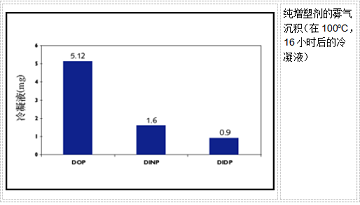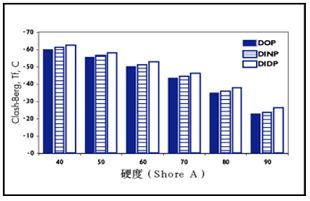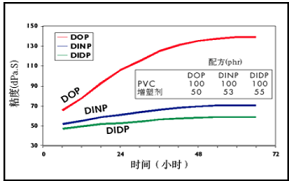DIDP, or diisodecyl phthalate, is a variety of phthalates (phthalates). It is liquid at room temperature and is commonly used in industry as a plasticizer for resins or plastics. (Plasticizer), especially products with high heat resistance or insulation requirements, automotive industry, cable material industry and other soft PVC products and tanning fields that require high product performance.
DIDP, DOP, and DINP (diisononyl phthalate) belong to the same series of products, and they are all phthalates. DIDP is an esterification reaction between phthalic anhydride and ten carbons, so it has a higher molecular weight, better heat resistance, better migration resistance, and better extraction resistance than DOP and DINP. DINP and DOP are also commonly used plasticizers in industry. So what is the difference between the three?
Performance comparison of DIDP, DINP and DOP
The main performance comparison with DINP (diisononyl phthalate) and DOP (dioctyl phthalate) is as follows:
1. Low volatility
The volatility is more than 50% lower than DOP. During processing, the loss of plasticizer can be reduced and the loss of volatile organic compounds can be reduced. Most importantly, lower volatility reduces foggas deposits on car windshields in the final product.

2. Migration resistance and good extractability
DIDP improves resistance to migration and soapy water precipitation, which can better maintain performance and extend product life.

3. Low temperature flexibility
When DIDP is used to replace DOP, low temperature flexibility and impact properties can be improved, and the amount of DOA can be reduced accordingly. Under the same hardness conditions, the Bell Brittleness test and Clash Berg test results of DIDP are better than those of DOP.

(low temperature flexibility under the same hardness conditions)
4. Reduce plastisol viscosity and improve viscosity stability
Under the same effect conditions, the viscosity of plastisol made from DIDP is lower than that of plastisol made from DOP. In addition, the change in viscosity over time is relatively low, that is, the viscosity of the plastisol decreases initially and remains low. Therefore, viscosity inhibitors do not have to be used, reducing costs.

Plastisol viscosity stability Brookfield viscosity (20rpm) when stored at 25oC
5. Reduce unit volume cost
When DIDP is used to replace DOP, the specific gravity of the product can be reduced and the cost per unit volume can be significantly reduced. If additional fillers are used to adjust the specific gravity difference, the cost can be further reduced.

 微信扫一扫打赏
微信扫一扫打赏

